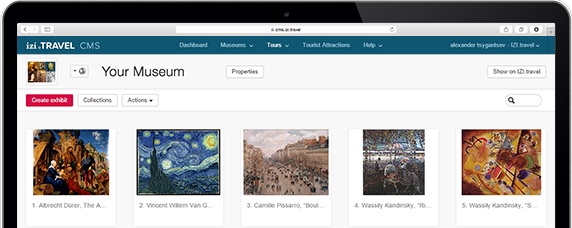Via Indipendenza
Via Indipendenza
Via Indipendenza is the most important street in Bologna. It leads from the Central Railway Station to the main square, Piazza Maggiore.
The railway station in Bologna that you have left behind was built in the mid-XIXth century and is the fifth largest in Italy. It is well connected with almost every part of Italy – from north to south.
The station was made famous by the tragic event that happened in August 1980. Terrorists detonated a bomb, that killed 85 people, mostly tourists. Today, at the station, it is possible to see a memorial plaque and a clock showing the exact time of the explosion - 10:25.
Via Indipendenza was built very close to what we see today in 1890, in the period when Bologna became an important railway intersection, especially with regard to the new route, Bologna-Ancona. As more people began to arrive in Bologna, the area around the railway station street became a large commercial centre.
In Via Indipendenza, Mussolini was attacked in 1926 while travelling by car. During the Second World War bombardment, it suffered greatly, especially in 1943. Lots of buildings on Via Indipendenza were destroyed, including the Arena del Sole Theatre and the façade of the Cathedral of Saint Peter.
Today, Via Indipendenza is the main shopping zone in Bologna, with numerous shops of different kinds situated under its porticoes. This street also hosts some important cultural areas, as already mentioned - Arena del Sole Theatre, the Civic Museum of the Middle Ages and the Cathedral of Saint Peter.
The cathedral is situated very close to the main square, Piazza Maggiore, and is very ancient. It was built in the XIIth century on the site of a IVth century church. The tower of the cathedral has the heaviest bell in Bologna called “nonna” (“grandma” in Italian). The interior is newer, and some parts were not completed until the XXth century; for example, the pavement. The main altar is the work of Alfonso Torreggianti and is made of marble. The main wooden crucifix is from the XIIth century.
The railway station in Bologna that you have left behind was built in the mid-XIXth century and is the fifth largest in Italy. It is well connected with almost every part of Italy – from north to south.
The station was made famous by the tragic event that happened in August 1980. Terrorists detonated a bomb, that killed 85 people, mostly tourists. Today, at the station, it is possible to see a memorial plaque and a clock showing the exact time of the explosion - 10:25.
Via Indipendenza was built very close to what we see today in 1890, in the period when Bologna became an important railway intersection, especially with regard to the new route, Bologna-Ancona. As more people began to arrive in Bologna, the area around the railway station street became a large commercial centre.
In Via Indipendenza, Mussolini was attacked in 1926 while travelling by car. During the Second World War bombardment, it suffered greatly, especially in 1943. Lots of buildings on Via Indipendenza were destroyed, including the Arena del Sole Theatre and the façade of the Cathedral of Saint Peter.
Today, Via Indipendenza is the main shopping zone in Bologna, with numerous shops of different kinds situated under its porticoes. This street also hosts some important cultural areas, as already mentioned - Arena del Sole Theatre, the Civic Museum of the Middle Ages and the Cathedral of Saint Peter.
The cathedral is situated very close to the main square, Piazza Maggiore, and is very ancient. It was built in the XIIth century on the site of a IVth century church. The tower of the cathedral has the heaviest bell in Bologna called “nonna” (“grandma” in Italian). The interior is newer, and some parts were not completed until the XXth century; for example, the pavement. The main altar is the work of Alfonso Torreggianti and is made of marble. The main wooden crucifix is from the XIIth century.
Download the free izi.TRAVEL app
Create your own audio tours!
Use of the system and the mobile guide app is free

